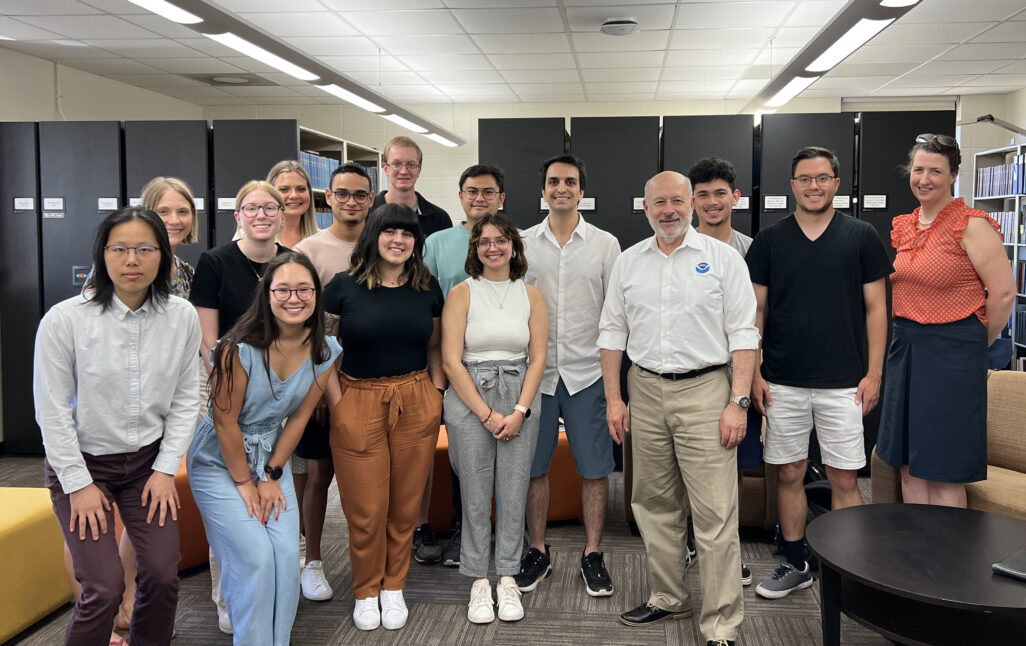Hollings Scholar — Undergraduate research opportunity at CIMSS
As a child learning to read, Peyton Camden stumbled upon a news article about the devastating tsunami that struck Indonesia on Dec. 26, 2004, killing more than 100,000 people. That event left an impression on her, sparking an interest in weather and earth sciences aimed at understanding the how and why of catastrophic events like tsunamis.
Now, Camden is an undergraduate meteorology student at Valparaiso University, and a 2022 NOAA Hollings Scholar. The Ernest F. Hollings Undergraduate Scholarship recipients receive financial support for two years and participate in a hands-on summer internship at a NOAA facility. The scholarship is named after South Carolina Senator Ernest Hollings who “was a champion for ocean policy and conservation” according to NOAA.

This summer, Camden’s internship brought her to Madison, Wisconsin to work with NOAA scientists Mark Kulie and Andrew Heidinger both of whom are stationed at the University of Wisconsin–Madison Cooperative Institute for Meteorological Satellite Studies.
“Everyone was very responsive, and the environment is more collaborative and interconnected than I expected,” she says.
Kulie and Heidinger enlisted her help to identify relationships between GOES cloud products, which provide information on cloud conditions and types, and lightning observations provided by the Geostationary Lightning Mapper. The project intrigued Camden especially when she realized it combined cloud research with her growing interest in coding: a perfect opportunity to push the boundaries of her comfort zone and skills.
Another recent catastrophic event — a derecho that swept across Nebraska, South Dakota and Minnesota on May 12, 2022 — served as a case study for her work. Derechos are characterized by strong, destructive winds that sometimes spawn tornadoes.
As Camden examined the GOES cloud products and the accompanying GLM data for the storm, she discovered that lightning occurred more frequently in ice clouds than in other cloud types. This discovery was especially rewarding for Camden because it confirmed that her results were consistent with previous research.
Camden also observed firsthand how research often takes longer than anticipated. While this was unexpected, it was the first time she had learned, and incorporated Python into her research. Learning this new language and how it could facilitate the cloud data analysis took time, strengthening her resolve to allow even more time for the next project.
In addition to her research with Kulie and Heidinger, Camden learned more about forecasting careers through a visit to the NOAA National Weather Service Milwaukee/Sullivan Office Around the same time, NOAA Administrator Richard Spinrad visited CIMSS and invited her to participate in a student panel discussion. The experience provided her with new insights into possible meteorology careers.
“There is incredible variation in the meteorology job sector,” Camden says. “I’m trying to stay open minded about my career.”
Camden is planning to present her research results at the 2023 American Meteorological Society Annual Meeting in Denver, Colorado in January. She hopes that her research will help others. “There is so much data and so many ways to analyze it,” she says. “This is just the beginning of this project.”
